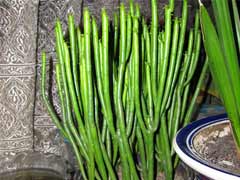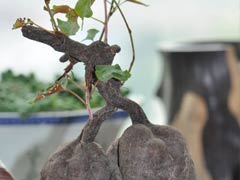Cultivation technology of grass coral
The grass coral is the whole plant of the golden millet orchidaceae grass coral, also known as Jiujie tea, swollen joint wind, elderberry, etc.. The taste is pungent, bitter, and the nature is flat. It has antibacterial and anti-inflammatory, clearing heat and detoxification, expelling wind and dampness, invigorating blood and relieving pain.It can be used to treat various inflammatory diseases, rheumatism, joint pain, sore swelling, bruises, bruises, and fractures. Because of its special medicine value, more and more people choose artificial planting of grass coral. How can it be used?For better artificial planting of grass coral, pay attention to the following points:
1. Site selection, site preparation
It is advisable to choose hillside fields, rowing fields or sandy soil areas beside ravines and streams and valleys with convenient water sources for planting. The land is dug in autumn and winter, and the land is naturally weathered, and the land is prepared before planting in the next spring. The nursery is selected in wet, wet,The plot under the evergreen broad-leaved forest with deep soil layer and loose texture is better. When preparing the land, apply 2000 kg of farmyard soil fertilizer per acre to plow into the soil, raking and leveling, and make a high border with a width of 1 meter.
2.ReproductionMethod
In production, cutting propagation is often used, and seeds and ramets can also be used for propagation.
1 Cuttage propagation for 3-4 months, select 1-2 year-old branches from strong-growing plants, cut them into 2-3 knots, 10-15 cm long cuttings, bundle them into small handles, and place their base endsSoaked in 0.05ml/L No. 3 ABT rooting powder solution for 2-3 minutes, or quickly dipped in 1ml/L NAA solution before cutting. The rooting time of the treated cuttings is significantly shortened, and the survival rate is almost 100%. Cutting treatmentsThen, in the seedbed prepared in advance, insert the soil obliquely according to the spacing of 5 cm X × 0 cm, leave 1 section on the soil surface, press tightly, and water thoroughly. If the seedbeds are all small, it is best to set up a arbor, oftenKeep the seedbed moist. About 30 days after the cuttings, the cuttings take root and begin to sprout. After survival, care should be taken to loosen the soil and weed, and apply thin human and animal manure water in a timely manner to promote the growth of seedlings. After 10-12 months of cultivation, they can be planted out of the nursery..
2 When the seeds are propagated from October to December, when the fruits are red and ripe, they are collected and mixed with fine wet sand seed: wet sand = 1:2, stored in a high-dry and ventilated indoor place, or packed inStore in a wooden box in a ventilated place. Take out the seeds for sowing in the next spring from February to February. On the whole seedbed, open a 2-3 cm deep sowing ditch with a row spacing of 20 cm, and sow the seeds evenly in the ditch.Cover with fire soil ash or fine soil, cover the grass with no seeds as a degree, and set up a shade shed. Seedlings emerge about 20 days after sowing, and the cover grass should be removed in time. During the seedling raising period, the soil should be loosened and weeded, and topdressing should be done in a timely manner.The seedling stage is well managed, and the nursery can be planted from November to December of that year.
3 The ramets are reproduced in early spring or late autumn. First cut the upper part of the plant 10 cm away from the ground to be used as medicine or as cutting material, and then dig up the roots and divide them into small plants with roots according to the stems.Plant the field directly with a row spacing of 20 cm × 30 cm. After planting, you need to water continuously to keep the soil moist. Pay attention to weeding and fertilizing after survival. This method is simple, high survival rate, fast plant growth, but low reproduction coefficient.
4 Seedlings for transplanting seeds and cutting propagation are generally transplanted from November to December of the current year or from February to February of the following spring. On the well-formed borders, they are planted according to the row spacing of 20 cm × 30 cm, andPour the root water thoroughly. After survival, field management should be strengthened in time.
3. Field management
1 Check seedlings and replenish seedlings. After transplanting, check the seedlings in time. If dead seedlings are found to be missing, bring soil to replant to ensure that the whole seedlings.
2 In the seedling period of intertillage and weeding, weeds in the field should be removed in time, and intertillage should be carried out to loosen the soil. Generally, intertillage is 3-4 times a year to keep the soil loose and no weeds in the field.
3 After irrigation and drainage, the soil should be kept moist. In case of drought, water should be irrigated in time. In rainy seasons, such as accumulation of water in the field, it should be drained in time to avoid root rot.
4 Topdressing is generally applied once a year in spring and summer, 6-7 kg of ammonium nitrate or urea, 2-3 kg of potassium chloride per mu, and irrigated with water. Combined with soil cultivation, once in winterFor farmyard manure, apply barn fertilizer or retting fertilizer to the rhizosphere of the plant, and use the soil to cover the fertilizer beside the ditch, which can not only keep warm and cold, but also promote the early growth of plants in the following spring.
5 Intercropping shade grass corals are resistant to negatives and like diffuse light, so they should be planted under evergreen broad-leaved forests. For example, planting on hillsides and rows of fields without shading, they can be planted in fields such as corn and other high-stalk crops., Use high-stalk crops for proper shade. Through the management of intercropping crops, it can not only promote the growth of grass coral, but also increase economic income.
4.Pests and diseasesPrevention
Grass coral has just been converted from wild to domestic species, and has strong resistance to diseases and insects. No serious diseases and insect pests have been found so far, and no need to control. However, if the field shading conditions are poor and the sun is strong in summer, leaf burns will occur, The leaf tip or leaf green appears spotted, and the whole leaf is severely burnt. Measures such as irrigation to cool down and improve shading conditions can be used to reduce the damage.
- Related knowledge
- Plants that suck smog don’t be naive
- What kind of Han Xincao picture
- What flowers to plant in June
- What does it mean that plants are born for a few years
- Plant hardiness zone map China USA
- Seven pruning suggestions for rose pruning techniques
- Family planting of succulent plants in South Africa and Apricot 4
- Family planting of succulent plants in South Africa and Apricot 1
- How to manage bonsai plant pot soil problem
- Technology of promoting old age of bonsai tree stump
- The cultivation method of plum bonsai
- Editor's recommendation
- How to pot honeysuckle
- The cultivation method of Daqingye Isatis indica
- Cultivation points of Chlorophytum
- Why the stems and leaves of Asparagus are easy to turn yellow
- Lythrum chinensis Lian Yelian, Doudou grass, iron water chestnut
- Planting technology of Pueraria lobata
- Medicinal value of Platycodon grandiflorum
- Cultivation technology of grass coral
- Plantain
- Artificial cultivation of Polygonum multiflorum



